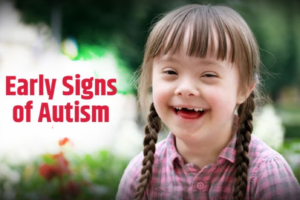Early Signs of Autism: Understanding and Managing Autism Spectrum Disorder

Autism Spectrum Disorder (ASD) is a complex neurodevelopmental condition that affects individuals differently, often presenting early in childhood. Recognizing the early signs of autism can lead to timely interventions, which can significantly improve outcomes. This blog post will delve into the early signs of autism and discuss effective management strategies.
Early Signs of Autism
Autism manifests in a range of behaviors and developmental milestones. Early detection is crucial, and parents and caregivers should be aware of the following signs:
1. Social Communication Challenges
– Limited Eye Contact: Infants may avoid eye contact and fail to follow objects visually.
– Delayed Speech: Children might not babble by 12 months or speak single words by 16 months.
– Lack of Gestures: Absence of pointing, waving, or other gestures by 12 months.
– Difficulty in Social Interactions: Limited interest in playing with other children, sharing interests, or responding to social cues.
2. Repetitive Behaviors and Routines
– Repetitive Movements: Hand flapping, rocking, or spinning objects.
– Strict Routines: Distress at small changes in routine or environment.
– Intense Focus on Specific Interests: Unusual interest in specific topics or objects.
3. Sensory Sensitivities
– Hyper or Hypo-reactivity to Sensory Input: Unusual reactions to sounds, textures, lights, or smells. For instance, being overly sensitive to loud noises or indifferent to extreme temperatures.
4. Developmental Delays
– Motor Skills: Delayed development in fine or gross motor skills.
– Play Skills: Limited pretend play or imaginative play compared to peers.
Management of Autism
Once autism is diagnosed, a comprehensive management plan tailored to the individual’s needs is essential. Here are key components of effective autism management:
1. Early Intervention
– Behavioral Therapies: Applied Behavior Analysis (ABA) is widely used to improve social, communication, and learning skills through positive reinforcement.
– Speech Therapy: Helps in improving communication skills.
– Occupational Therapy: Focuses on improving daily living skills and motor development.
2. Educational Support
– Individualized Education Plans (IEPs): Customized learning plans to meet the child’s specific needs.
– Special Education Services: Specialized programs within schools that provide tailored educational experiences.
3. Medical and Nutritional Support
– Medication: While there is no cure for autism, certain medications can help manage symptoms like anxiety, depression, or hyperactivity.
– Dietary Interventions: Some children benefit from special diets or nutritional supplements, though these should be approached with professional guidance.
4. Family Support
– Counseling and Training: Providing support and training to families to help them understand autism and develop effective coping strategies.
– Support Groups: Connecting with other families facing similar challenges can provide emotional support and practical advice.
5. Technology and Assistive Devices
– Communication Aids: Devices or apps that help non-verbal children communicate.
– Sensory Tools: Items that help manage sensory sensitivities, such as noise-canceling headphones or weighted blankets.
6. Community and Recreational Programs
– Social Skills Groups: Programs that provide opportunities for children to practice social interactions in a structured setting.
– Recreational Activities: Participation in activities like sports, music, or art, which can be therapeutic and enhance social skills.
Conclusion
Recognizing the early signs of autism and understanding effective management strategies are crucial steps in supporting individuals with ASD. With early intervention and a comprehensive, individualized approach, children with autism can achieve significant progress and lead fulfilling lives. As awareness and understanding of autism continue to grow, so do the resources and support available to those affected by this complex condition.